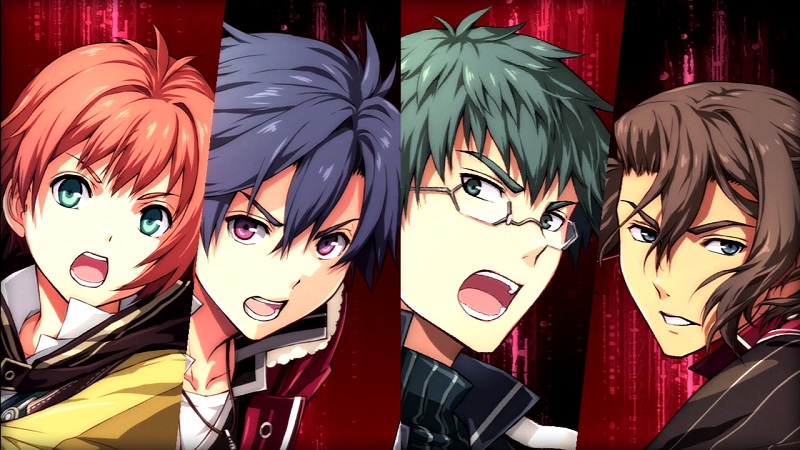The Legend of Heroes: Trails of Cold Steel II is a third-person Japanese role-playing game available from retail stores and for download from the PlayStation Store for the PS4, while previously having released on PS3 and PS Vita with compatibility for PlayStation TV. The Legend of Heroes series began in 1989 as a spin-off of the Dragon Slayer series under the title Dragon Slayer: The Legend of Heroes followed by a sequel in 1992 called Dragon Slayer: The Legend of Heroes II with both games releasing on such platforms as PS1, SEGA Mega Drive, SEGA Saturn, Super Famicom and more besides, although the second game has never received a release in English regions. The three subsequent games moved away from the Dragon Slayer moniker to what is known as the Gagharv trilogy that originally released respectively in 1994, 1996 and 1999 that all made it to PSP some years later.
After the Gagharv trilogy came the Trails in the Sky trilogy that originally released in 2004, 2006 and 2007 receiving releases on PSP before later being enhanced for PS3 and Vita. Trails from Zero and Trails to Azure released in Japan during 2010 and 2011 respectively on PSP before receiving enhanced ports titled Trails from Zero: Evolution and Trails to Azure: Evolution on Vita in 2012 and 2014, but are yet to receive an English localisation as development of the Trails of Cold Steel was preferred to it, although there is a possibility that it may still one day be localised.
The future of The Legend of Heroes series looks bright as all four parts of the Trails of Cold Steel quadrilogy have been released in Japan with the first two games released on PS3 and Vita with the third and fourth games having released on PS4. The third part also received an English localisation on PS4 in late 2019 with the final part of the Trails of Cold Steel saga set for English localisation in late 2020 on PS4, while parts III and IV are also released on Nintendo Switch. Can the PS4 port of The Legend of Heroes: Trails of Cold Steel II deliver significant enhancements?
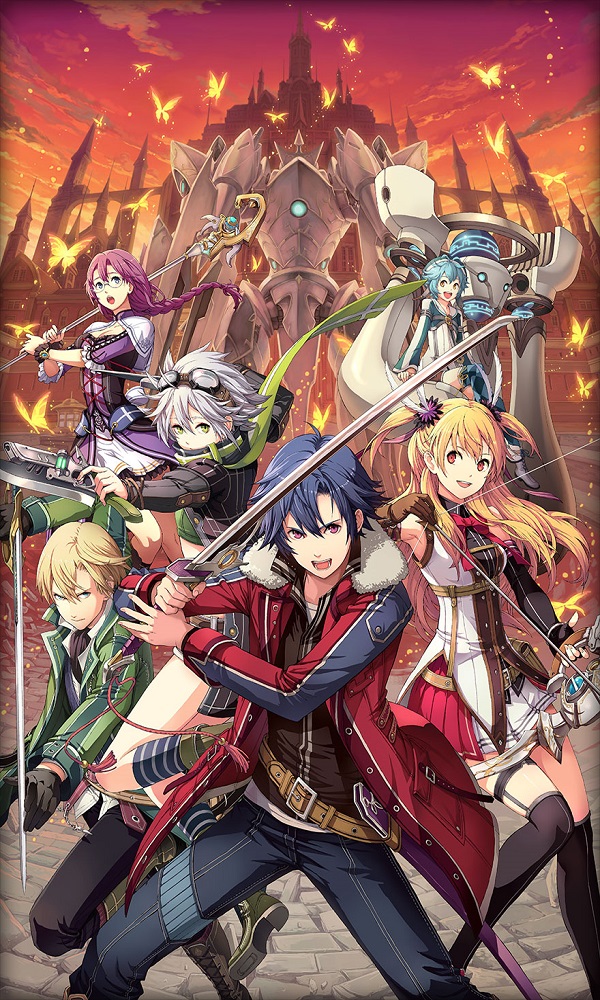
For players who are yet to experience the first entry into The Legend of Heroes: Trails of Cold Steel saga that would prefer a glimpse at some core plot points can read a story summary covering the prologue, half a dozen chapters, intermission and final chapter, alongside viewing character profiles for each of the 28 characters. The Legend of Heroes: Trails of Cold Steel II’s story begins with a reflection on the thoughts and feelings on the bonds that grew between characters, alongside Rean Schwarzer’s emotions on what occurred during the prequel. Rean Schwarzer awakes a month after the battle in the climax of the prequel; desperate to learn the fate of his fellow Class VII team members, friends and family.
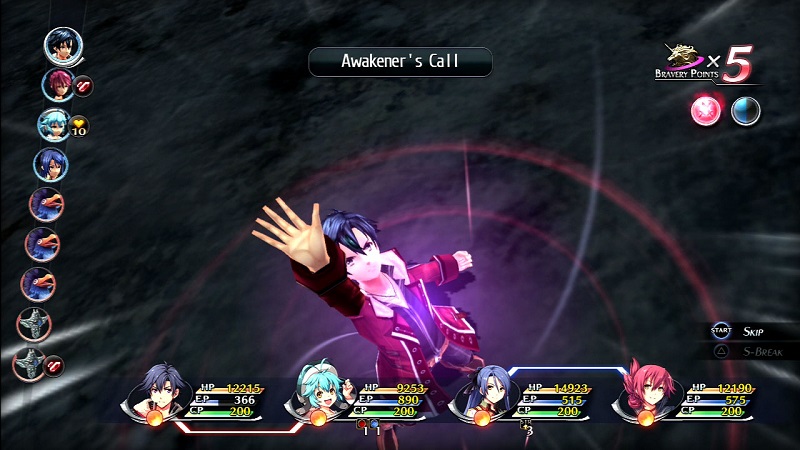
Story quests are often named key events that are required to advance the story such as exploring Ymir after Rean returns there in the prologue. Meanwhile, side quests also referred to as quest events such as defeating a giant crop munching monster during the first act are not essential to progressing the story, but they do need to be completed within a reasonable period of time; otherwise the side quest and corresponding reward will no longer be available.
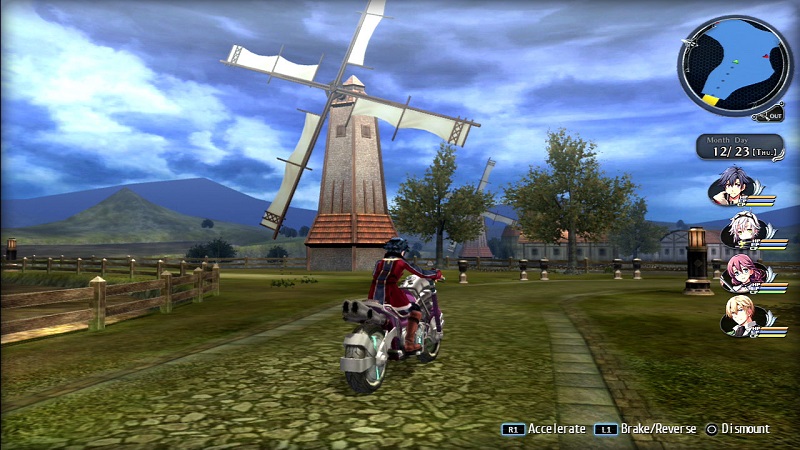
The player can also engage in fun activities such as fishing in any body of water situated in Erebonia. Catching fish earns angler points that gradually increases depending upon the variety and size of each fish. Talking to Annabelle that provided the fishing equipment allows Rean to exchange angler points for items, while more items become available as Rean’s angler rank increases. Talking to characters will sometimes yield a recipe or food ingredients to be able to create a certain food dish that replenishes health such as meeting Head Chef Werner at the dining room of the Phoenix Wings Inn located in Ymir.
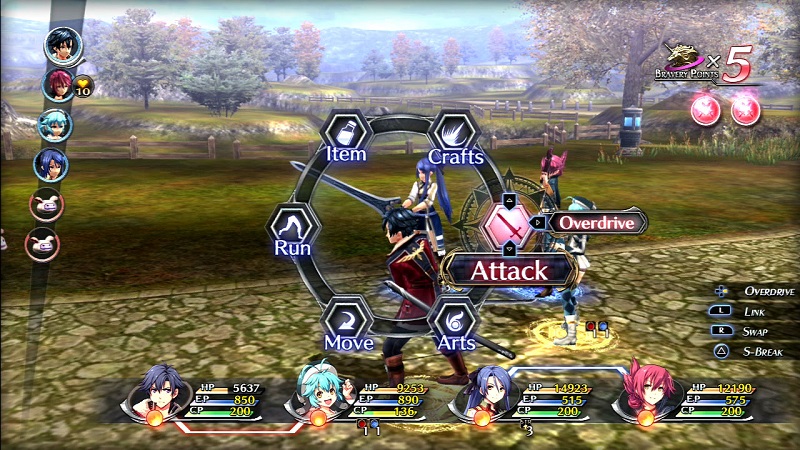
There is a complete freedom of movement outside of battles, although that immediately switches to turn-based actions between ally characters and enemies as soon as a battle begins. However, you can pick and choose your battles as there are no random battles to suddenly force a battle onto you; resulting in the ability to be more controlled and calculated in your approach by sneaking past enemies to avoid battle if you want to progress onto the next area that much faster.
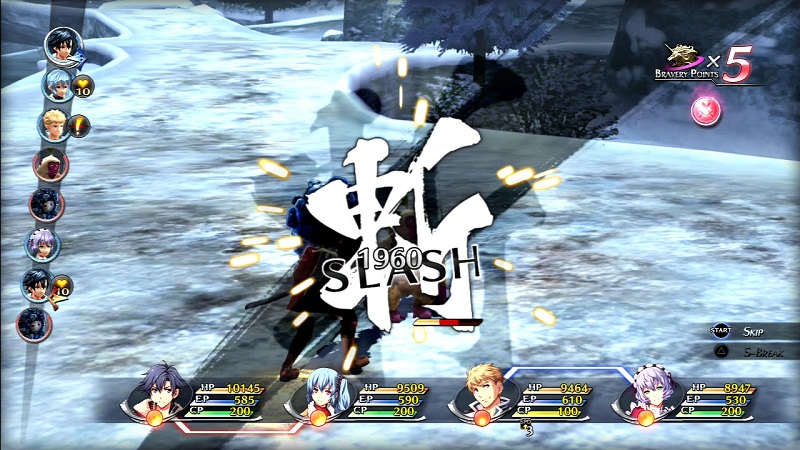
Assist or rush attacks can be performed by having an ally character nearby and reacting to the assist or rush attack prompt within the limited duration it flashes on screen for. Counterattacks are performed automatically when an enemy has missed in their attempt to inflict damage on your character for as long as the enemy is within range, although the same occurs if your character misses an enemy; providing the enemy with a chance to perform a counterattack. Inflicting damage on enemies and even receiving damage will earn the respective character Craft Points (CP) that can be utilised to perform Super Crafts that are also referred to as S-Crafts, although each S-Craft has a specific range that it is best used within and a certain level required by a particular character before their S-Craft can be utilised.
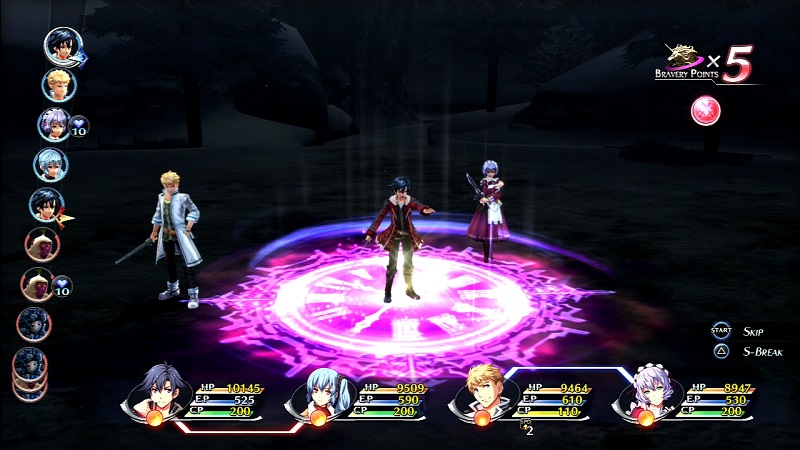
Orbments are retained from the first Trails of Cold Steel as a fundamentally important element of battle as they are mechanical devices that extract orbal energy from septium with the purpose of generating magic and a range of enhancements, while Battle Orbments that are also referred to as ARCUS are personal devices that are capable of harnessing orbal energy in a variety of ways, depending upon the Quartz set within the Battle Orbment. Quartz is a crystal circuit created from septium fragments called sepith. Multiple varieties of Quartz can be utilised in harmony with Battle Orbments producing the ability to enable specific arts such as Aqua Bleed providing a member of the Class VII team to use the Aqua Bleed art and Fire Bolt allows the usage of the Fire Bolt art. Quartz can also increase statistics such as HP 1 adding 1,000 to the maximum HP and Evade 1 improving the chances of evading an incoming attack by 5%, alongside Quartz that possess multiple functions including Heal recovering HP during exploration and providing the ability of using the Tear and Teara arts, although multiple functions are only provided by rarer Quartz. Master Quartz is stronger and more adaptable in comparison to regular Quartz which fits into the centre of the ARCUS Battle Orbments that even has the capabilities of levelling up statistics and gaining new art abilities by fighting battles as it is equipped.
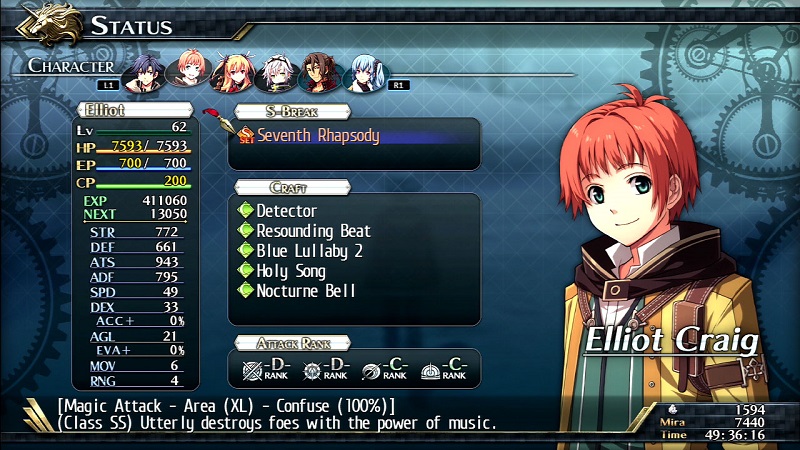
As was the case with the first Trails of Cold Steel; XP can be earned for those ally characters who participate in a successful battle in which enemies are all defeated with XP awarded at the end of the battle. Earning XP and levelling up is incredibly important as ally characters will receive rewards such as new crafts. Another form of levelling up is the Link Experience that is connected to forging strong bonds with ally characters within the Class VII team that strengthens the Combat Link between Rean and those around him; producing powerful abilities such as cover and finishing blow. However, there is further motivation for participating in such bonding events as they also help to tell a personal individual story of each ally character. Not every move is immediately available such as Overdrive being unlocked after completing the prologue that provides a restoration of 30% HP and EP, alongside 30CP, curing any ailments inflicted during battle and three continuous turns for both combat linked ally characters, although Overdrive must be earned thereafter by fighting battles.
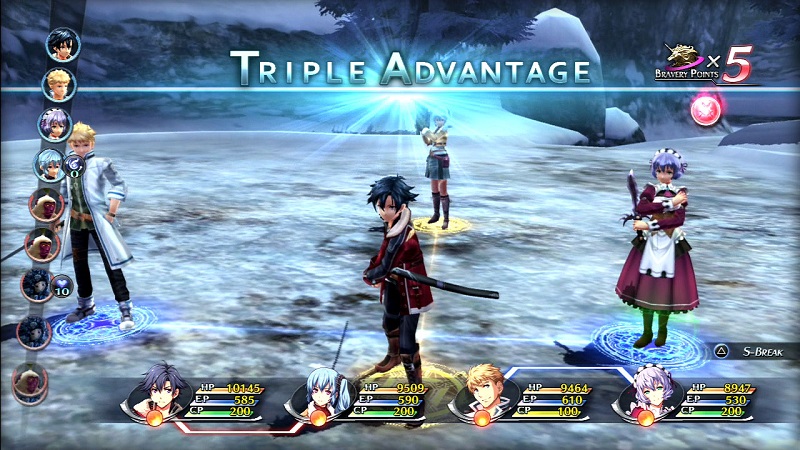
Character design sees the vast majority of ally characters return to create a positive familiarity with the likeable and relatable cast of characters from the first Trails of Cold Steel, alongside their unique personalities and traits that further helps the continued momentum of the story immediately following on from the prequel. Meanwhile, enemy design is reminiscent of the first Trails of Cold Steel as enemies continue to look menacing and threatening with the player learning several additional statistics about each enemy the more that Rean encounters them.
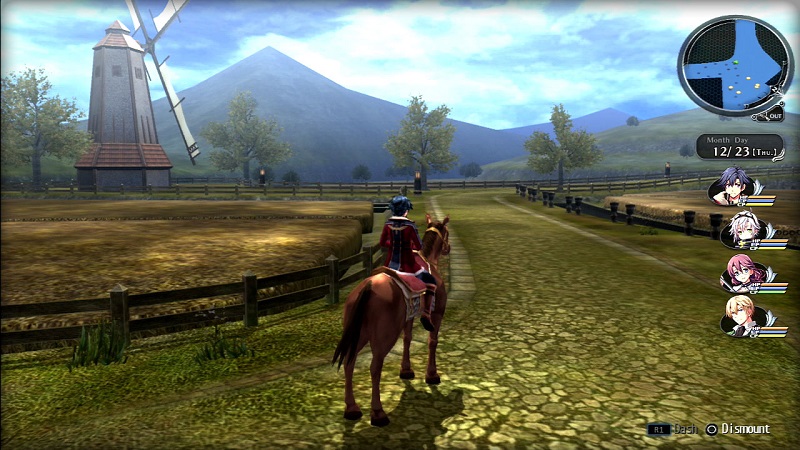
Environment design focuses on vast outdoor environments as Rean returns home to Ymir, alongside interior environments that can be fully explored. Exploring environments in a thorough fashion usually yields important items contained in chests that are situated away from the instructed path of the main quest or side quest.
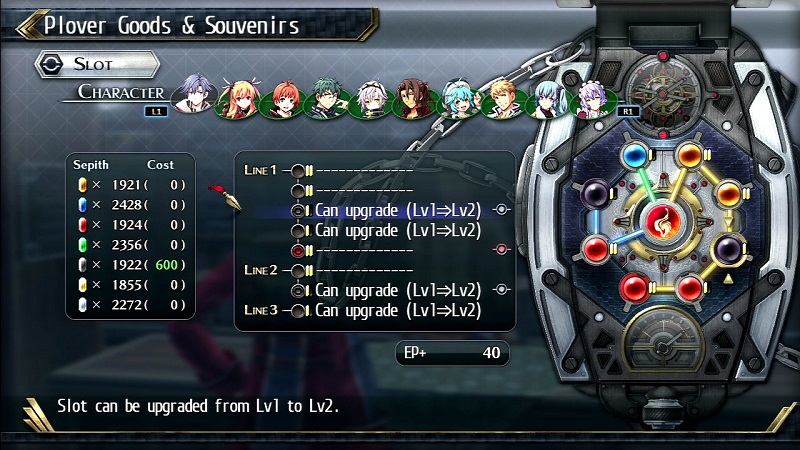
The Legend of Heroes: Trails of Cold Steel II is as large in scale of a JRPG as the first Trails of Cold Steel yet equally excels at being easy to navigate via camp menus that present every necessary detail of what has been learned during gameplay in such a way that players could return to gameplay after any length of duration away from the game and immediately be able to refresh their memory of fundamental gameplay mechanics. Meanwhile, a player that wants to get onto the action of the battles can skip the dialogue, but that is not advised as the dialogue is a joy to behold.
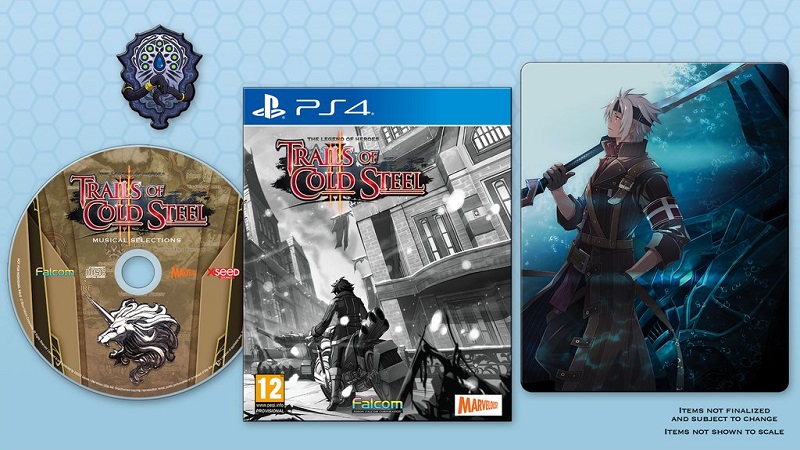
The Legend of Heroes: Trails of Cold Steel II has a Limited Edition titled the Relentless Edition that is available from the Marvelous Games Store for the very reasonable price of £44.99. The Relentless Edition comprises of a retail release of The Legend of Heroes: Trails of Cold Steel II on PS4, an Ouroboros Emblem pin, a soundtrack album CD containing 23 full-length songs, 7 Sept-Terrion cards set and a steelbook case with alternative artwork. Elsewhere, all previously released downloadable content is bundled into the standard and limited edition releases as it is directly integrated into the gameplay. Cross-save functionality allows The Legend of Heroes fans that have previously played The Legend of Heroes: Trails of Cold Steel II on PS3 or Vita to import their save to immediately continue from where they had progressed to, alongside items and XP and levelling up statistics. However, players that have completed the first Trails of Cold Steel are able to obtain a special bonus in Trails of Cold Steel II via loading a save.
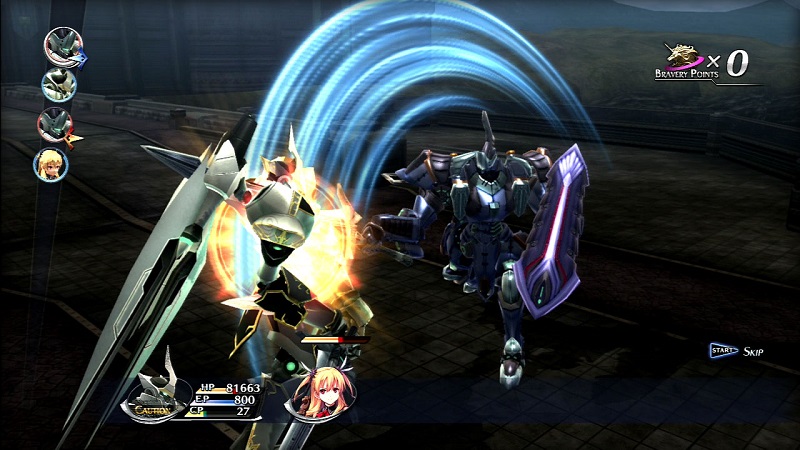
The controls are appropriately mapped to the DualShock 4 controller with the control scheme consisting of pressing X to confirm, talk, inspect or to perform a field attack; pressing square to open the quick travel menu or pressing square during battle to display detailed information regarding the enemy; pressing triangle to open the camp menu or pressing triangle in conjunction with a direction during battle to select a character to immediately perform their S-Craft even when it is not their turn; pressing O to cancel; pressing R1 to dash; pressing L1 to switch leader; pressing L2 to engage turbo mode to increase the pace of gameplay; pressing up or down on the d-pad to zoom the positioning of the camera in or out respectively; pressing options to expand the minimap; changing the direction of the left analogue stick to move and in conjunction with holding O to walk; changing the direction of the right analogue stick to rotate the camera; pressing R3 to reset the camera; and pressing the share button takes you to the share feature menu. Tapping the touch pad displays the notebook, while vibration occurs when hitting an enemy with a weapon or using the character’s unique Quartz skills and when defeating an enemy to reflect the impact of the weapon or art or when being hit by an enemy to similarly show the reduction in health of your character. There is no light bar implementation, although it could have produced various colours to represent your character’s health or the quartz utilised by your currently chosen character.
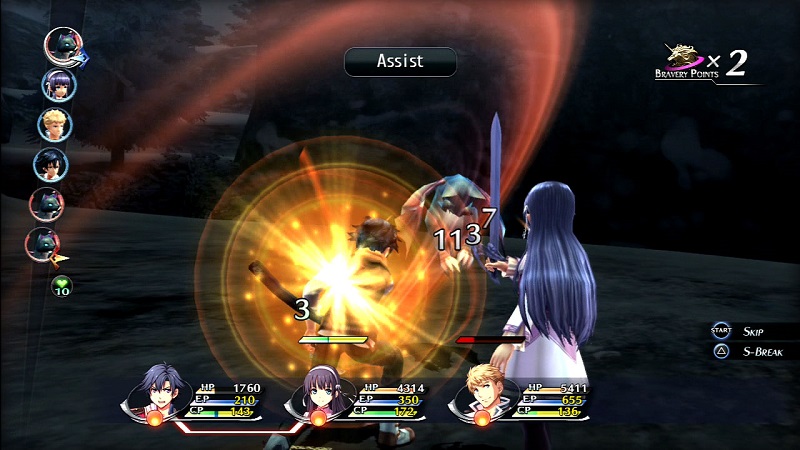
Graphically, the quality of the PS4 remaster of The Legend of Heroes: Trails of Cold Steel II resembles that of the prequel as it focuses mostly on improving character models, their weaponry and enemy models, although some environments have flat textures or pixelation, while other environments look amazing in their ornate details, lighting and design. Battle animations are incredible, especially during the S-Break sequences with a consistent frame-rate throughout exploration and combat no matter how chaotic battles become. Meanwhile, PS4 Pro support produces 4K resolution at 60 frames per second.
The Legend of Heroes: Trails of Cold Steel II’s presentation is solid with a great user interface across various menus such as the main menu, options menus and gameplay menus including all of the camp and notebook menus with support for navigation via the left analogue stick, d-pad and face buttons, although there is no support for navigation via the right analogue stick and touch pad. Menu backgrounds consist of the lead character laying on a mountainous rock formation as snow gently falls. A story intro video sequence begins to play if the player does not press a button for 30 seconds or so.
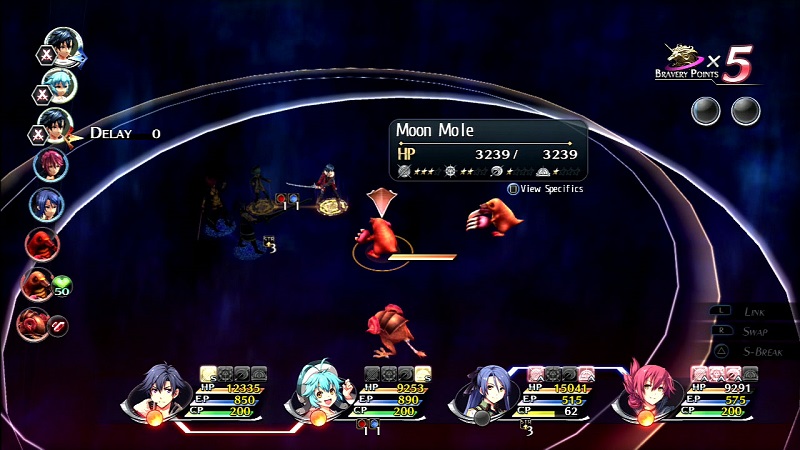
An extreme amount of effort was invested into the English language localisation for the Vita version, while there was even further effort put into the English language localisation for the enhanced PC release that actually featured an additional 5,000 lines of English language dialogue with the PS4 version including all of the PC version’s English language localisation. Meanwhile, the original Japanese voice-overs are included for players that would prefer to hear how the characters sounded in their native dialect. There is exceptional voice-over talent in the English language localisation such as Sean Chiplock voicing Rean Schwarzer having previously voiced Kiyotaka Ishimaru in Dangan Ronpa: Trigger Happy Havoc, Edward Bosco who voices Machias Regnitz having previously voiced Chipp Zanuff in Guilty Gear Xrd: -SIGN-, Cassandra Lee Morris voicing Fie Claussell and Alfin Reise Arnor having previously voiced Calilica in Ys: Memories of Celceta, Marisha Ray voicing Laura S. Arseid having previously voiced Margaret in the Persona franchise, Mela Lee who voices Sharon Krueger having previously voiced Rachel Alugard in the BlazBlue series, Ashly Burch voices Millium Orion having voiced Chloe Price in Life is Strange and many more equally as talented voice-over artists throughout the entire cast. Sound effects include text being written into dialogue and descriptive boxes, walking, running, doors opening, water flowing through rivers, performing moves and utilising special abilities to attack enemies and more besides, while the music consists of climactic and battle driven themes. There is no DualShock 4 speaker implementation that could have produced voice-overs, sound effects or music.

The trophy list includes 51 trophies with 38 bronze trophies, 10 silver trophies, 2 gold trophies and 1 platinum trophy. Easier trophies include an emphasis on battles such as the Born to the Battlefield and The Manway Method bronze trophies for winning 100 and 600 battles respectively; the Smells Like Team Spirit bronze trophy for using burst 50 times in battle; and the Overdriven to Win bronze trophy for using overdrive 100 times in battle. Harder trophies include the Honor Roll gold trophy for achieving student rank A0; the Spoils of War silver trophy for opening every chest between the prologue and finale; and the Banisher of Nightmares silver trophy for completing the game on nightmare difficulty. It is estimated that depending upon skill and a good trophy guide to provide some helpful tips that it would take over 100 hours to platinum the trophy list.
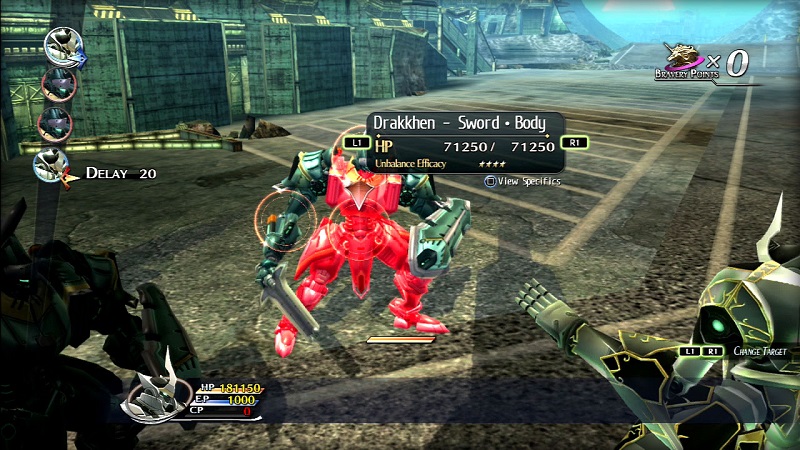
As was previously the case in the first Trails of Cold Steel; there are four difficulty levels including easy, normal, hard and nightmare with the major differences being the gradual reduction of damage inflicted by allies on their enemies and an increase to the amount of damage received by allies from enemy attacks, alongside an increase in the efficiency of enemy attacks and an increased quantity of HP that naturally makes it harder to overcome specific enemies, especially enemy bosses. Hard and nightmare difficulty levels do not allow the player to select the weaken enemies and retry options after reaching a game over screen, while nightmare difficulty is balanced for New Game+ functionality; therefore making nightmare difficulty the most ideal difficulty level for replays.
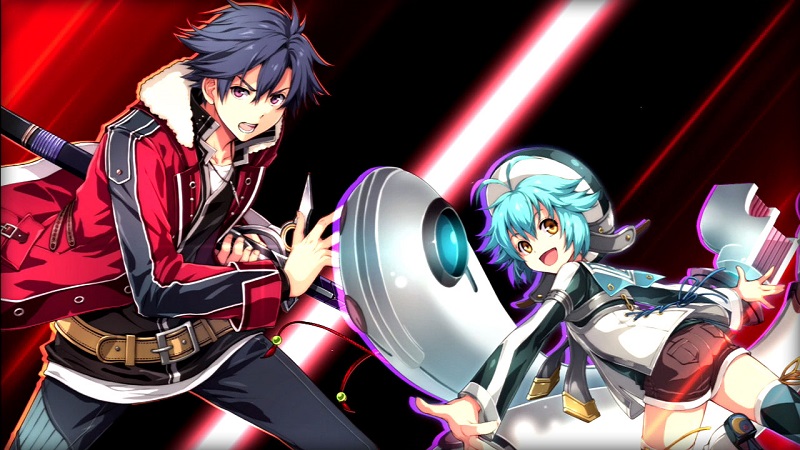
There are no local or online co-operative or competitive multiplayer and no online leaderboards, although there could have been local co-operative multiplayer for up to 4 players, while local competitive multiplayer could have focused on one or two players playing as the characters from the Class VII team and another player or two playing as the enemies that would have fitted the turn based gameplay rather easily. Meanwhile, online multiplayer could have taken the same approach as local co-operative and competitive multiplayer, alongside online leaderboards that could have ranked players accordingly based upon how quickly each player has completed every combined battle and the lowest amount of combat moves used in each battle.
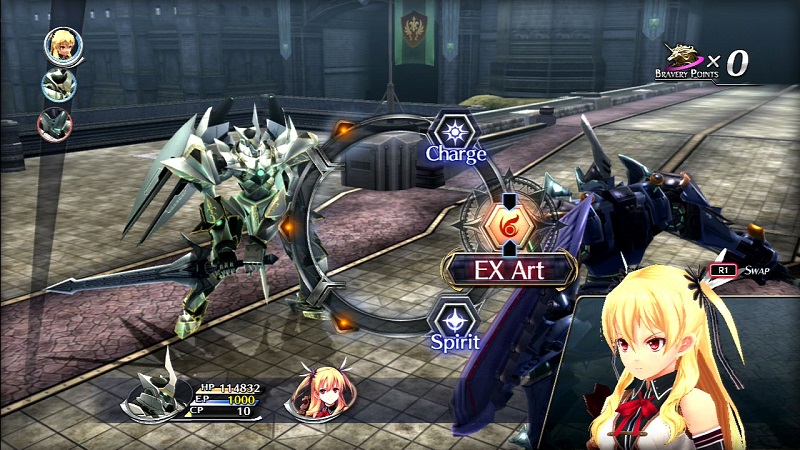
The Legend of Heroes: Trails of Cold Steel II’s replayability stems from a vast quantity of story quests, side quests and fun activities such as fishing and cooking, combat with a wide range of varying abilities and equipment, XP and levelling up, four difficulty levels to tailor the difficulty to your skill and an amazing story that collectively is capable of having players returning for over 100 hours of gameplay, alongside New Game+ providing the capability of bringing statistics from the first playthrough into the second playthrough.
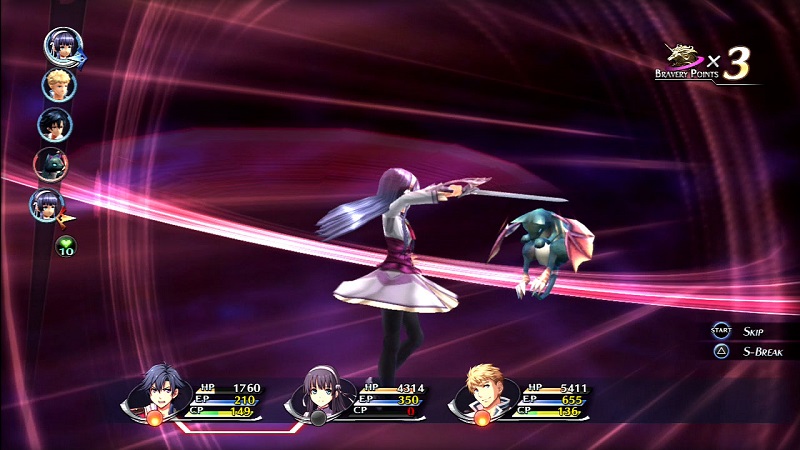
Overall, the enhanced port of The Legend of Heroes: Trails of Cold Steel II is of the same quality as the first Trails of Cold Steel; as Trails of Cold Steel II also offers improved graphics, audio and options for what was already an exceptional JRPG experience and an engaging story with excellent gameplay mechanics, some epic battles and a cast of likeable and relatable characters. The Legend of Heroes: Trails of Cold Steel II is highly recommended to fans of The Legend of Heroes series regardless of whether you own previous versions and fans of the RPG genre in general. It must be stated for anyone interested in playing The Legend of Heroes: Trails of Cold Steel II portably; that the Vita version is a worthy addition to any Vita collection.
9 out of 10
Analysis
– Title: The Legend of Heroes: Trails of Cold Steel II
– Developer: Nihon Falcom
– Publisher: PQube (Europe)/Marvelous
– System: PS4
– Format: PS4 Blu-Ray Disc/PSN Download
– Cross-Buy: No
– Cross-Play: Yes (Cross-save to continue from PS3 or Vita save)
– Players: 1
– Hard Drive Space Required: 7.07GB
